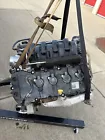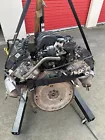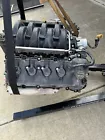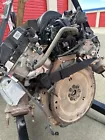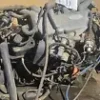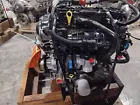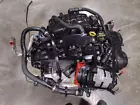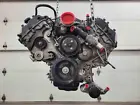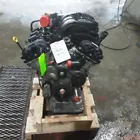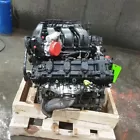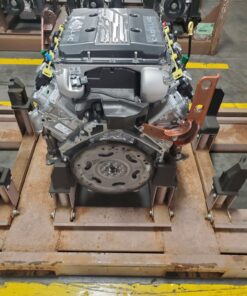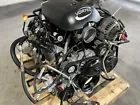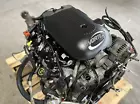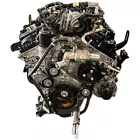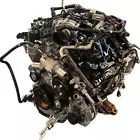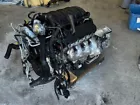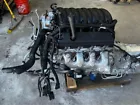FORD F150 5.0L COYOTE MOTOR
3,000 $ Original price was: 3,000 $.2,800 $Current price is: 2,800 $.
The FORD F150 5.0L COYOTE MOTOR is part of Ford’s Modular Engine Family, first introduced in 2011 as a response to increasing demand for powerful yet efficient V8 engines. It was developed to meet the needs of both muscle car enthusiasts in the Mustang GT and hardworking truck owners of the F-150. The goal was to create a naturally aspirated engine that could rev high, produce excellent power across the rev range, and still comply with modern fuel efficiency and emissions standards.
In the FORD F150 5.0L COYOTE MOTOR has become one of the most respected options, offering a perfect blend of reliability, raw V8 performance, and aftermarket flexibility.
The FORD F150 5.0L COYOTE MOTOR is part of Ford’s Modular Engine Family, first introduced in 2011 as a response to increasing demand for powerful yet efficient V8 engines. It was developed to meet the needs of both muscle car enthusiasts in the Mustang GT and hardworking truck owners of the F-150. The goal was to create a naturally aspirated engine that could rev high, produce excellent power across the rev range, and still comply with modern fuel efficiency and emissions standards.
In the FORD F150 5.0L COYOTE MOTOR has become one of the most respected options, offering a perfect blend of reliability, raw V8 performance, and aftermarket flexibility.
Design and Engineering: What Makes the Coyote Special?
The FORD F150 5.0L COYOTE MOTOR featuring DOHC (dual overhead cams) and 32 valves. Unlike older V8s that relied solely on displacement for power, the Coyote uses advanced airflow design, high-rev capability, and a combination of direct and port fuel injection to produce impressive power while maintaining reasonable fuel economy.
Key design features include:
1. DOHC Architecture with Twin Independent Variable Cam Timing (Ti-VCT)
-
Allows precise control of valve timing on both intake and exhaust cams.
-
Optimizes power, fuel economy, and emissions.
-
Ti-VCT contributes to broader torque and flatter power delivery.
2. Aluminum Block and Heads FORD F150 5.0L COYOTE MOTOR
-
Reduces weight, contributing to better fuel efficiency and vehicle dynamics.
-
The block is deep-skirted with cross-bolted main bearing caps for durability under high RPM loads.
3. Forged Crankshaft & Hypereutectic Pistons
-
Strong internal structure, especially in later generations.
-
Designed to withstand higher compression and aggressive combustion.
4. Split-Plane Crankshaft
-
Traditional V8 rumble and smooth power delivery.
-
Contributes to the characteristic sound that Ford truck fans love.
Generational Evolution of the FORD F150 5.0L COYOTE MOTOR
Gen 1 (2011–2014)
-
First appearance in the F-150 in 2011.
-
Power Output: ~360–385 hp / 380–390 lb-ft torque.
-
Introduced basic Ti-VCT and aluminum block design.
-
Used port fuel injection only.
Gen 2 (2015–2017)
-
Increased power and efficiency.
-
Revised cylinder heads, stronger rods and pistons (borrowed from Boss 302).
-
Introduced charge motion control valves (CMCV) in the intake for better low-end response.
-
Power Output: ~385–395 hp / 387–400 lb-ft torque.
Gen 3 (2018–2020)
-
Major redesign, added dual-fuel injection (direct + port).
-
Revised cylinder heads and increased bore size.
-
Increased compression ratio from 11.0:1 to 12.0:1.
-
Stronger components for better high-RPM performance.
-
Power Output: ~395–400 hp / 400–410 lb-ft torque.
Gen 4 (2021–Present)
-
Power increased slightly.
-
Focused on efficiency and emissions (including cylinder deactivation tech).
-
Improved cooling and lubrication systems.
-
Integrated start-stop system and further refinements in fuel delivery.
-
Power Output: ~400–420 hp / 410–430 lb-ft torque depending on model and tune.
Performance Characteristics
Despite being a naturally aspirated engine in an era of turbocharged competition, the FORD F150 5.0L COYOTE MOTOR shines in several performance areas:
Power Band FORD F150 5.0L COYOTE MOTOR
-
Makes power all the way to 7,000 RPM, unlike traditional truck V8s that peak early.
-
High-rev capability means it’s fun for both towing and spirited driving.
Torque Delivery
-
While it doesn’t match the low-end torque of Ford’s 3.5L EcoBoost V6, it offers a more linear and predictable torque curve.
-
Excellent for smooth acceleration, passing power, and performance upgrades.
Sound
-
Distinctive deep American V8 rumble, especially with aftermarket exhausts.
-
No turbochargers to muffle the exhaust note — just raw, throaty sound.
Practical Application in the F-150
The FORD F150 5.0L COYOTE MOTOR is a favorite for F-150 buyers who:
-
Want naturally aspirated reliability over turbo complexity.
-
Prefer traditional V8 power and feel.
-
Need a versatile truck for both work and play.
-
Plan to modify or tune their vehicle for more power.
Towing and Payload
While it doesn’t tow quite as much as the EcoBoost variants, it still delivers:
-
Towing Capacity: ~9,000–11,000 lbs (trim and axle-ratio dependent)
-
Payload Capacity: ~1,700–3,300 lbs
Maintenance and Durability
The FORD F150 5.0L COYOTE MOTOR has proven to be very reliable in both truck and Mustang form when properly maintained. Key maintenance includes:
-
High-quality synthetic oil (usually 5W-20 or 5W-30)
-
Regular spark plug replacement (they wear faster at high RPM)
-
Keeping the PCV and fuel injection systems clean to avoid carbon buildup
-
Watching for oil consumption (Gen 3)
Common Modifications and Aftermarket Support
One of the biggest strengths of the Coyote platform is its insane aftermarket potential.
Popular Mods Include:
-
Cold Air Intake Systems
-
Improve throttle response and modest horsepower gains.
-
-
Cat-Back and Full Exhaust Systems
-
Boost horsepower, reduce backpressure, and enhance sound.
-
-
Performance Tunes (ECU Flash or Handheld Tuners)
-
Huge gains in throttle response, torque, and even fuel economy.
-
-
Headers (Long Tube or Shorty)
-
Improve exhaust scavenging and mid-high range power.
-
-
Forced Induction
-
Superchargers (Roush, Whipple, Paxton, VMP) can push power to 600–1000+ hp.
-
Some twin-turbo kits exist but require more extensive modifications.
-
-
Camshafts & Valve Train Upgrades
-
For enthusiasts looking to make serious high-end horsepower.
-
-
Oil Pump Gears and Timing Sprockets (OPGs)
-
Must-have upgrades when building high-RPM or boosted Coyotes to avoid failures.
-
Potential Weaknesses and Known Issues FORD F150 5.0L COYOTE MOTOR
While the FORD F150 5.0L COYOTE MOTOR is highly respected, it’s not perfect. Here are a few things to watch:
1. Oil Consumption (Especially Gen 3)
-
Some trucks consume more oil than expected, due to piston ring design or PCV system inefficiencies.
-
Ford has issued some TSBs but hasn’t recalled it.
2. “Coyote Tick”
-
Ticking sound at idle; often harmless and linked to direct injection or valvetrain components.
-
Can be annoying but not typically a durability issue.
3. Cam Phaser Noise (Earlier Engines)
-
Some models have cam phaser rattle at startup. Not as common in Gen 3 and newer.
4. Fuel Economy
-
Lower MPG compared to EcoBoosts in real-world driving — especially when towing or in city use.
-
Typically averages 15–18 mpg combined.
FORD F150 5.0L COYOTE MOTOR vs. EcoBoost (3.5L V6)
| Feature | 5.0L Coyote V8 | 3.5L EcoBoost V6 |
|---|---|---|
| Aspirated | Naturally Aspirated | Twin Turbocharged |
| Horsepower | ~400–420 hp | ~400–450 hp |
| Torque | ~410–430 lb-ft | ~470–510 lb-ft |
| Towing Capacity | ~9,000–11,000 lbs | Up to 14,000 lbs (maxed trims) |
| Fuel Economy | Lower (15–18 mpg average) | Higher (18–22 mpg average) |
| Maintenance Cost | Lower (fewer moving parts) | Higher (more complex systems) |
| Sound | Classic V8 rumble | More subdued, whooshy turbo |
| Aftermarket | Massive support, huge power | Good, but more limited than Coyote |
Best Use Cases for the FORD F150 5.0L COYOTE MOTOR
-
Performance street truck builds
-
Mild off-roaders with exhaust/tune upgrades
-
Daily drivers who want V8 power and reliability
-
Classic V8 enthusiasts avoiding turbo tech
-
Buyers wanting to swap or upgrade engines later
Related products
Engine
Engine
Engine


